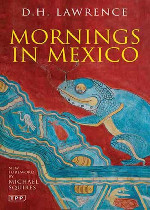
Mornings in Mexico(墨西哥早晨) 立即阅读
Mornings in Mexico is a collection of travel essays by D. H. Lawrence, first published by Martin Secker in 1927. These brief works display Lawrence's gifts as a travel writer, catching the 'spirit of place' in his own vivid manner. Lawrence wrote the first four of these essays at the same time as he was completing and revising his Mexican novel, The Plumed Serpent (1926). Three of the others, about Pueblo Indians, were written earlier in 1924 in New Mexico, and the final piece "A Little Moonshine with Lemon" came later as Lawrence remembered his New Mexico ranch (Kiowa Ranch) from Italy.
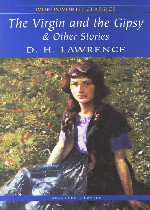
The Virgin and the Gipsy(吉普赛之恋) 立即阅读
The Virgin and the Gipsy is a short novel (or novella) by English author D.H. Lawrence. It was written in 1926 and published posthumously in 1930. Today it is often entitled The Virgin and the Gypsy which can lead to confusion because first and early editions had the spelling "Gipsy". The tale relates the story of two sisters, daughters of an Anglican vicar, who return from finishing school overseas to a drab, lifeless rectory in the East Midlands, not long after the World War I.
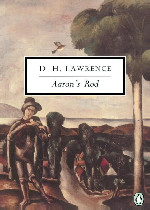
Aaron's rod refers to any of the staff carried by Moses's brother, Aaron, in the Torah. The Bible tells how, along with Moses's rod, Aaron's rod was endowed with miraculous power during the Plagues of Egypt that preceded the Exodus. There are two occasions where the Bible tells of the rod's power.
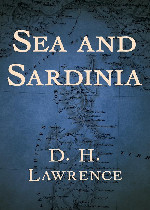
Sea and Sardinia is a travel book by the English writer D. H. Lawrence. It describes a brief excursion undertaken in January 1921 by Lawrence and Frieda, his wife a.k.a. Queen Bee, from Taormina in Sicily to the interior of Sardinia. They visited Cagliari, Mandas, Sorgono, and Nuoro. His visit to Nuoro was a kind of homage to Grazia Deledda but involved no personal encounter. Despite the brevity of his visit, Lawrence distils an essence of the island and its people that is still recognisable today.
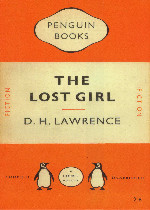
The Lost Girl is a novel by D. H. Lawrence, first published in 1920. It was awarded the 1920 James Tait Black Memorial Prize in the fiction category. Lawrence started it shortly after writing Women in Love, and worked on it only sporadically until he completed it in 1920. Alvina Houghton, the daughter of a widowed Midlands draper, comes of age just as her father’s business is failing. In a desperate attempt to regain his fortune and secure his daughter’s proper upbringing, James Houghton buys a theater.
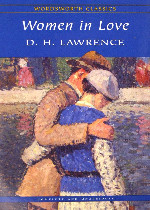
Women in Love is a novel by British author D. H. Lawrence, published in 1920. It is a sequel to his earlier novel The Rainbow (1915), and follows the continuing loves and lives of the Brangwen sisters, Gudrun and Ursula. Gudrun Brangwen, an artist, pursues a destructive relationship with Gerald Crich, an industrialist. Lawrence contrasts this pair with the love that develops between Ursula Brangwen and Rupert Birkin, an alienated intellectual who articulates many opinions associated with the author.
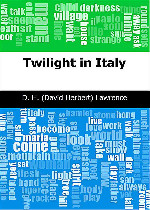
Twilight in Italy(意大利的黄昏) 立即阅读
Twilight in Italy describes Lawrence's time as an educated working-class Englishman living among the Italian working men and women in the region around Lake Garda, from the Austrian Alps to the North, to Switzerland and finally Como and Milan. He captures the psyche of Italian peasants without ever romanticising or patronising them. His quick intuition locks onto their harsh, narrow lives and deep primitive emotions, exploring the very soul of Italy and its approach to life, death, belief, love, sexuality and change.
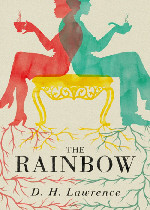
The Rainbow is a 1915 novel by British author D. H. Lawrence. It follows three generations of the Brangwen family living in Nottinghamshire, particularly focusing on the individual's struggle to growth and fulfilment within the confining strictures of English social life. Lawrence's 1920 novel Women in Love is a sequel to The Rainbow.
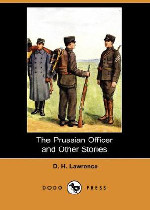
The Prussian Officer and Other Stories(普鲁士军官) 立即阅读
The Prussian Officer and Other Stories is a collection of early short stories by D. H. Lawrence. It was published by Duckworth in London on 26 November 1914, and in America by B. W. Huebsch in 1916. The stories collected in this volume are: "The Prussian Officer", "The Thorn in the Flesh", "Daughters of the Vicar", "A Fragment of Stained Glass", "The Shades of Spring", "Second Best", "The Shadow in the Rose Garden", "Goose Fair", "The White Stocking", "A Sick Collier", "The Christening", "Odour of Chrysanthemums".
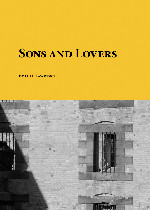
Sons and Lovers is a 1913 novel by the English writer D. H. Lawrence, originally published by B.W. Huebsch Publishers. The Modern Library placed it ninth on their list of the 100 best novels of the 20th century. While the novel initially received a lukewarm critical reception, along with allegations of obscenity, it is today regarded as a masterpiece by many critics and is often regarded as Lawrence's finest achievement.